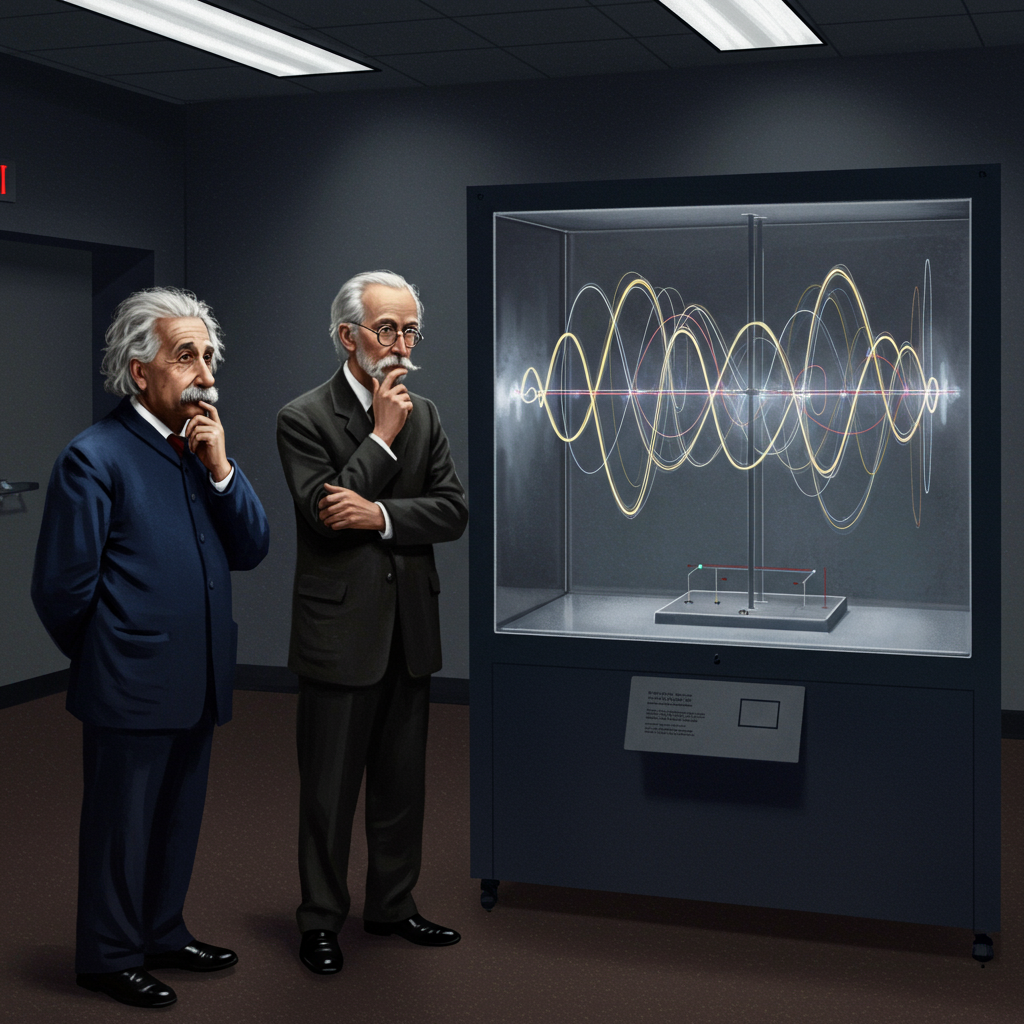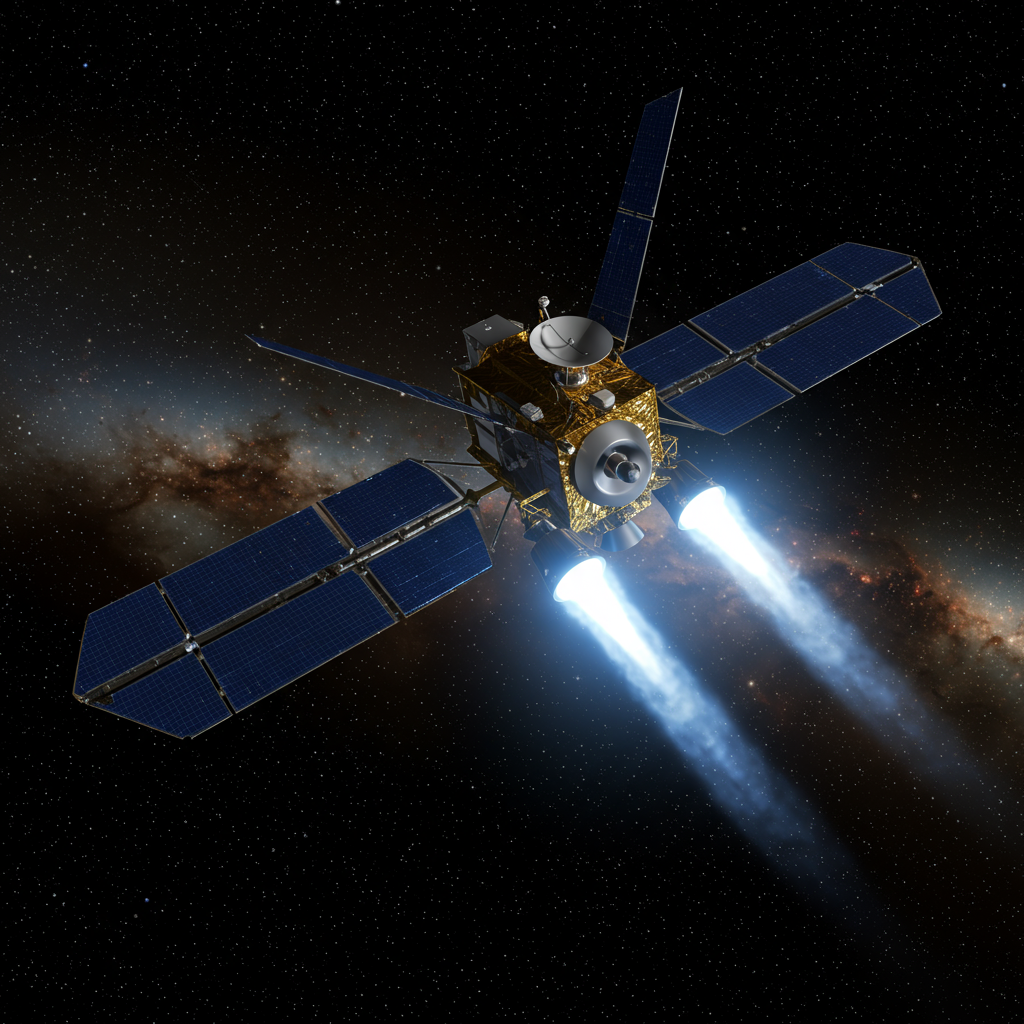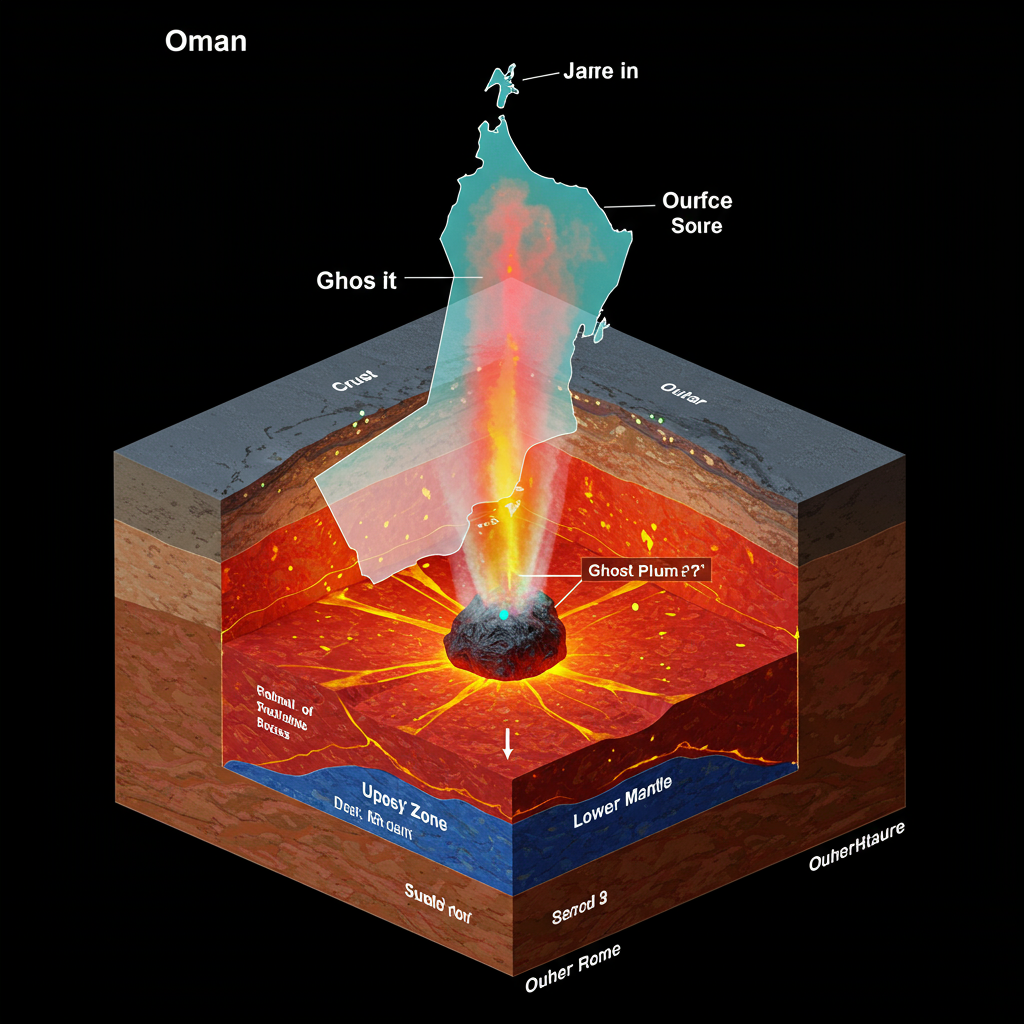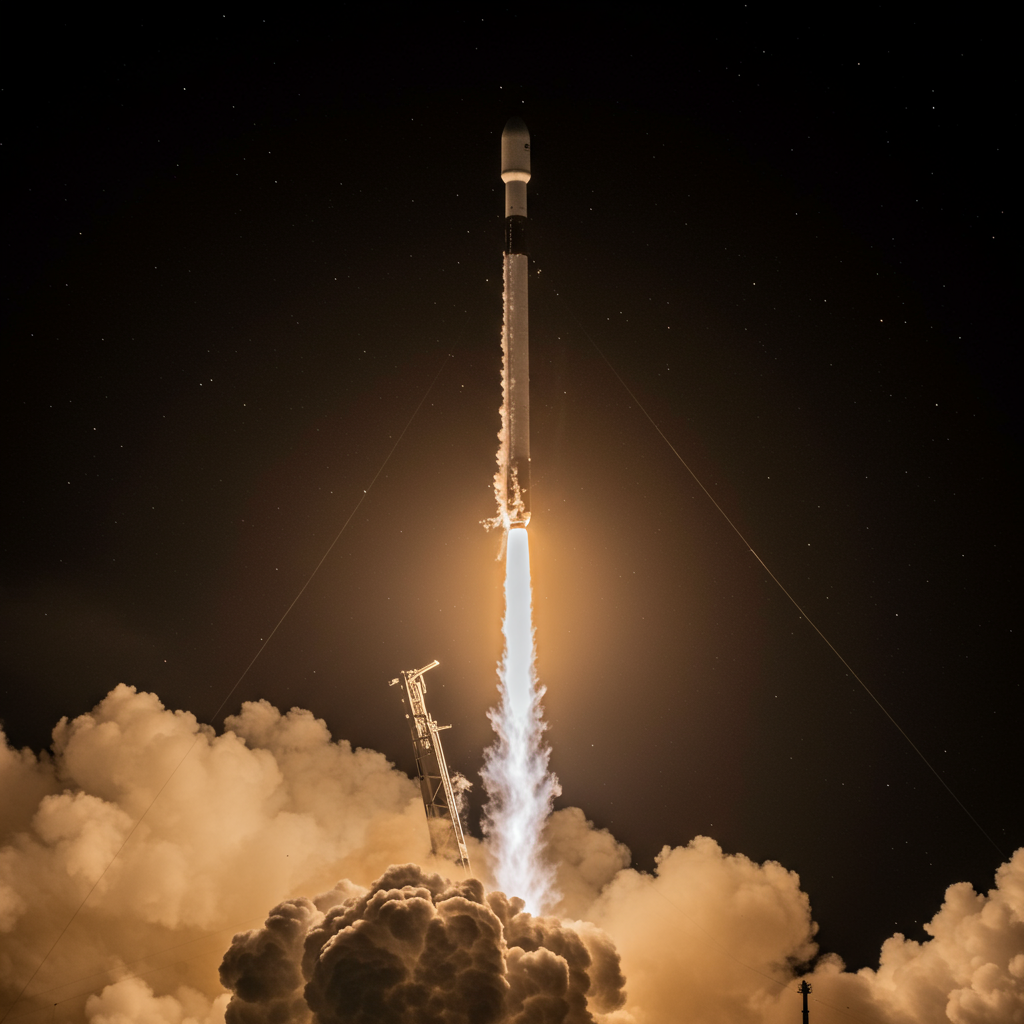For nearly a century, a foundational debate in quantum physics — championed by titans Albert Einstein and Niels Bohr — remained a profound mystery. How does light behave? Is it a wave, a particle, or both? And can we ever truly observe both aspects at the same time? Recent groundbreaking research from the Massachusetts Institute of Technology (MIT) has now provided a definitive answer, performing the most precise double-slit experiment to date and unequivocally confirming Bohr’s long-held interpretation. This achievement not only resolves a historic scientific rivalry but also offers fresh clarity on the bizarre rules governing our quantum universe.
The Enduring Mystery of Light’s Dual Nature
The double-slit experiment is perhaps the most iconic demonstration in quantum mechanics. First conducted by Thomas Young in 1801, it initially proved light acts like a wave, creating interference patterns similar to ripples in water. However, with the dawn of quantum theory in the 20th century, the experiment revealed a far more perplexing truth: light, and indeed all matter, possesses a wave-particle duality.
In the classic setup, a beam of light passes through two narrow slits onto a screen. If light behaved only as particles, you’d expect two bright lines. Instead, a striking pattern of alternating bright and dark bands emerges — a clear sign of waves interfering with each other. Yet, here’s the quantum twist: if you try to observe which slit a photon passes through, the interference pattern vanishes. The light instantly behaves like a particle, choosing one path. Crucially, you can only ever observe one property at a time; the act of observation changes reality itself.
This inherent limitation became the heart of a spirited discussion between two of the greatest minds in physics.
Einstein vs. Bohr: A Century-Old Quantum Showdown
The legendary debate between Albert Einstein and Niels Bohr ignited in 1927. Einstein, renowned for his theory of relativity, found the quantum world’s probabilistic nature unsettling. He proposed a thought experiment to challenge the idea that light’s wave and particle properties could not be simultaneously observed.
Einstein envisioned the two slits of the experiment as being cut into a thin sheet of paper, suspended by delicate springs. He hypothesized that a photon, passing through one slit, would impart a minuscule force, causing the corresponding “spring” to recoil. If this tiny recoil could be measured, Einstein argued, one could determine the photon’s path (particle nature) while simultaneously observing the interference pattern (wave nature). This, he believed, would expose a flaw in the emerging quantum theory.
Niels Bohr, a champion of quantum mechanics and the uncertainty principle, quickly countered Einstein’s ingenious proposal. Bohr argued that the very act of precisely measuring the recoil of the “spring” (to detect the photon’s path) would introduce enough uncertainty into the slit’s position. This uncertainty, he asserted, would inevitably “wash out” or destroy the delicate wave interference pattern, leaving only evidence of the particle. According to Bohr, the universe simply wouldn’t allow both observations at once. For nearly a hundred years, without the technology to perform such a delicate measurement, this fundamental disagreement remained a fascinating thought experiment.
MIT’s Idealized Quantum Lab
Enter the MIT team, led by John D. MacArthur Professor of Physics, Wolfgang Ketterle, and first author Vitaly Fedoseev. Their groundbreaking work created an “idealized” version of Einstein’s thought experiment, leveraging cutting-edge advancements in atomic physics. Instead of macroscopic slits and hypothetical springs, they used individual atoms themselves as the “slits.”
The researchers cooled over 10,000 atoms to ultracold microkelvin temperatures — just fractions of a degree above absolute zero. These frozen atoms were then precisely arranged into a crystal-like lattice using an array of laser beams. In this configuration, each atom was isolated, acting as the “smallest slit you could possibly build.” By shining a weak beam of light through these atoms, they could observe how individual photons scattered off two adjacent atoms, mirroring the classic double-slit experiment at its quantum essentials.
Tuning Reality: Atoms as Quantum Detectors
A critical aspect of the MIT setup involved manipulating the “fuzziness” of these individual atoms. This concept is central to understanding their breakthrough. The atoms were held in place by laser light, which could be adjusted to tighten or loosen its grip. A more loosely held, “fuzzier” atom meant its exact spatial position was less certain. This “fuzziness” directly corresponded to the “springs” in Einstein’s original thought experiment, acting as a quantum indicator of whether a photon’s path was being recorded.
The team meticulously controlled this “fuzziness” to tune the probability of a photon appearing as a wave versus a particle. They aimed for a scenario where approximately half the photons exhibited wave-like behavior and half exhibited particle-like behavior. This allowed them to precisely quantify the relationship between observing a photon’s path and the visibility of its interference pattern. The more “fuzzy” an atom was, the more it would be “rustled” by a passing photon, thus revealing information about the photon’s path.
The Definitive Verdict: Bohr Was Right
The results were unequivocal. As described in their publication in Physical Review Letters, the MIT physicists definitively confirmed Bohr’s prediction. They observed that the more information obtained about the photon’s path (its particle nature) — by tuning the atoms to be “fuzzier” — the lower the visibility of the interference pattern became. Conversely, to observe a clear interference pattern, no information about the photon’s path could be gained.
The experiment went a step further. In previous versions of the double-slit experiment that attempted to test Einstein’s “spring” idea, actual spring-like components were often incorporated. The MIT team’s innovation was performing the experiment without the proverbial springs. They temporarily turned off the laser holding the atoms, allowing them to effectively float in free space for a millionth of a second before gravity pulled them down. In this “spring-free” environment, they observed the exact same phenomenon: light’s wave-particle duality could not be simultaneously observed. This confirmed that it’s the fundamental “fuzziness” — the quantum correlation between the photon and atom — not the physical “spring,” that dictates whether a photon acts as a wave or a particle.
Why This Matters: Reaffirming Quantum Fundamentals
This landmark MIT quantum experiment holds profound significance for our understanding of the universe. It doesn’t just resolve an academic debate; it provides the clearest experimental affirmation yet of one of quantum mechanics’ most counterintuitive and fundamental principles: you cannot simultaneously know all properties of a quantum system with perfect precision. It powerfully validates the uncertainty principle in action.
Wolfgang Ketterle aptly described their work as an “idealized Gedanken experiment,” something Einstein and Bohr could only dream of. The ability to manipulate single atoms and photons with such precision highlights the incredible strides made in quantum technologies. As the United Nations declared 2025 the International Year of Quantum Science and Technology, celebrating a century since the formulation of quantum mechanics, this resolution of a nearly 100-year-old debate arrives at a fitting moment. It stands as a testament to humanity’s relentless pursuit of knowledge, continually pushing the boundaries of what is observable and knowable in the bizarre, yet beautiful, quantum realm.
Frequently Asked Questions
What is the core mystery resolved by the MIT double-slit experiment?
The MIT double-slit experiment resolves a nearly century-old debate between Albert Einstein and Niels Bohr regarding the dual nature of light. The core mystery was whether it’s possible to simultaneously observe light behaving as both a wave (showing an interference pattern) and a particle (revealing its path through the slits). The experiment definitively confirmed Niels Bohr’s interpretation that these two aspects cannot be observed at the same time, validating the quantum mechanical uncertainty principle.
How did MIT scientists achieve such a precise version of the double-slit experiment?
MIT scientists, led by Professor Wolfgang Ketterle, achieved this precision by using ultracold atoms as the “slits” in their experiment. They cooled over 10,000 atoms to microkelvin temperatures and arranged them in a crystal-like lattice using lasers. Each individual atom acted as the smallest possible “slit.” By manipulating the “fuzziness” or spatial uncertainty of these atoms, they could control the information obtained about a photon’s path, directly testing Einstein’s original thought experiment without physical “springs.”
Why is the resolution of the Einstein-Bohr debate significant for quantum physics?
The resolution of the Einstein-Bohr debate is profoundly significant because it provides compelling experimental evidence for the fundamental principles of quantum mechanics, particularly the uncertainty principle. It reinforces the idea that the act of observation inherently influences quantum reality. This clarity strengthens the foundational understanding of quantum physics, which is crucial for advancing new technologies like quantum computing and highly sensitive quantum sensors. It validates the theoretical framework that underpins much of modern physics.
Conclusion
The recent work from MIT represents a monumental step forward in our understanding of quantum mechanics. By performing an “idealized” double-slit experiment with unprecedented precision, scientists have finally put to rest a century-old debate between two of history’s most influential physicists, Einstein and Bohr. This definitive proof that light’s wave and particle natures cannot be simultaneously observed solidifies the foundation of quantum theory. As we look ahead to the future of quantum science, breakthroughs like this pave the way for exciting new discoveries and technological innovations, deepening our grasp of the universe’s most enigmatic laws. The journey into the quantum realm continues, now with clearer vision than ever before.




